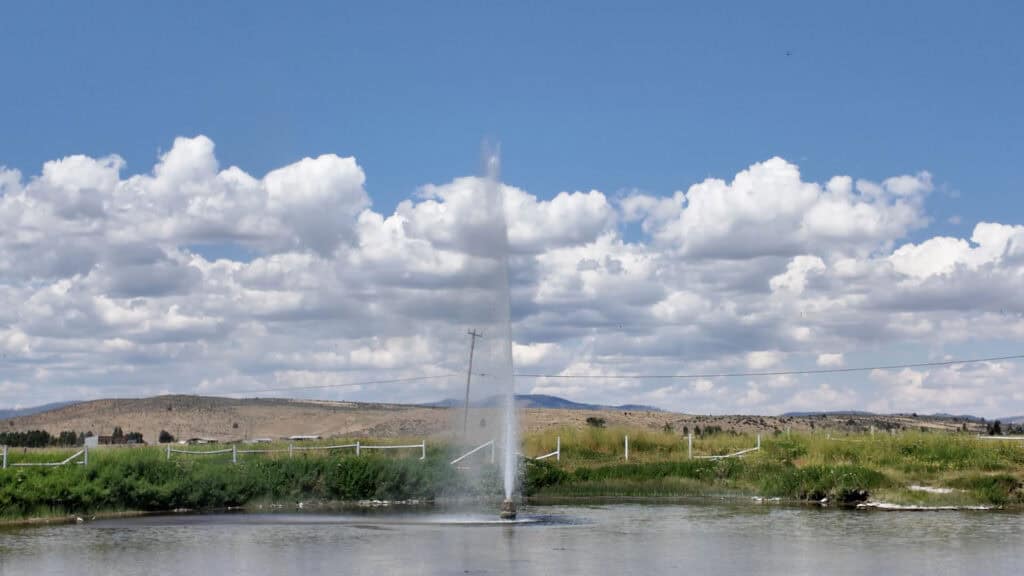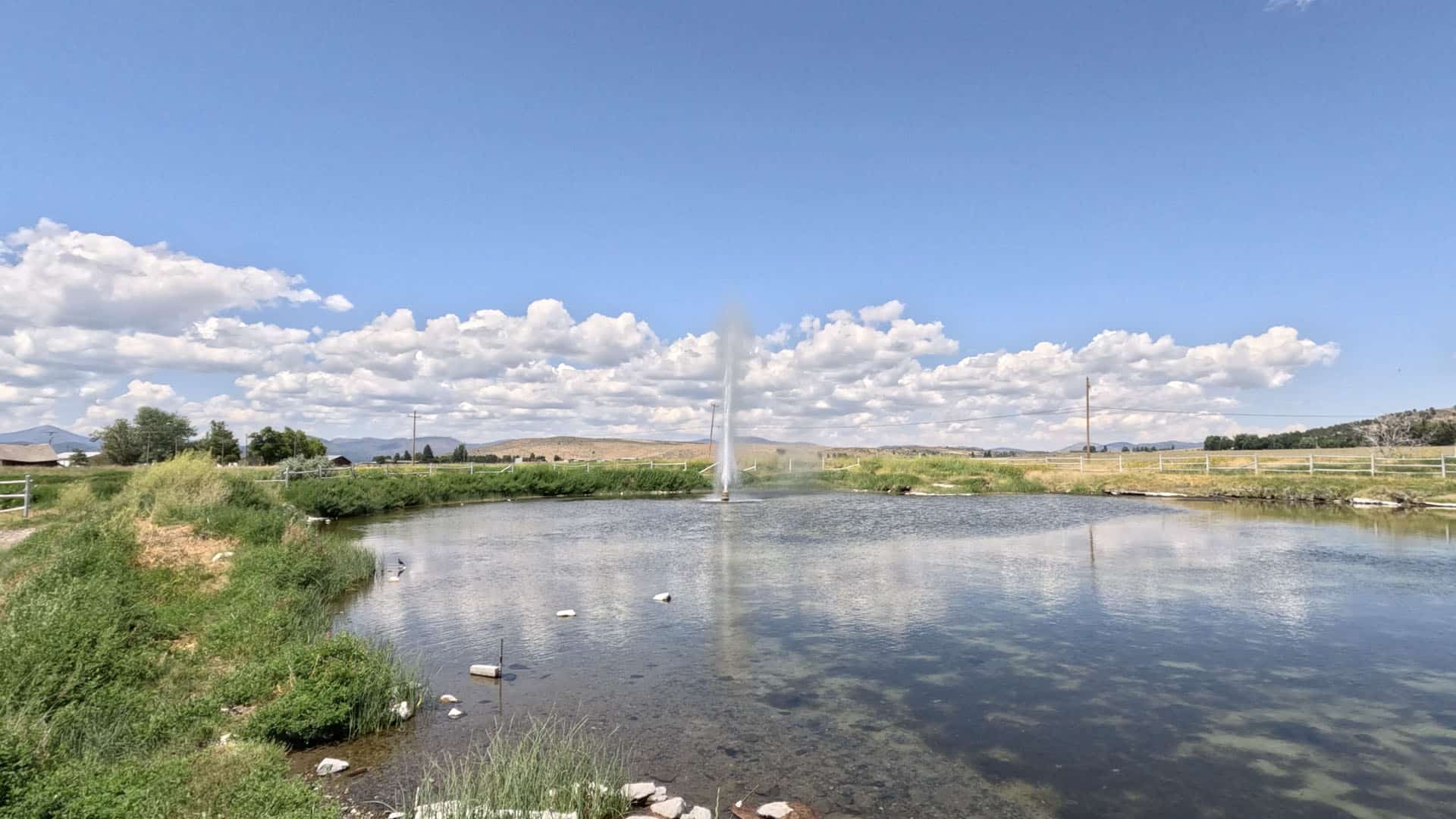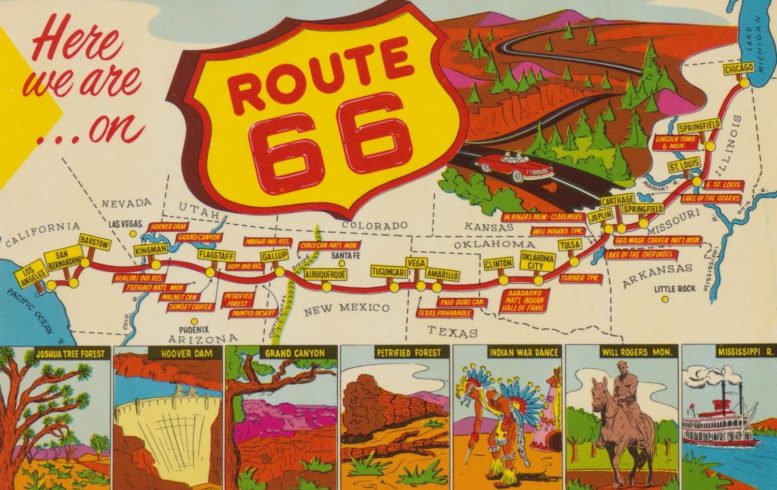Tucked away just north of Lakeview, Oregon, Old Perpetual is a high-desert oddity you won’t find anywhere else in the state. This geyser, born from a 1920s hot spring resort experiment, still shoots scalding water skyward every couple of minutes. It may not rival Old Faithful, but it’s a one-of-a-kind roadside stop that is like no other place in Oregon.
Recently we were doing a road trip on Highway 395 through Oregon, and I had heard that just north of Lakeview you can see Old Perpetual, often described as Oregon’s only continuously erupting geyser. Since I am a sucker for roadside curiosities, especially rare natural features, I stopped to check it out. It is not Yellowstone, it does not shoot 200 feet and tourists do not gather by the dozens, but I found it worth the detour.
Lakeview, known as “The Tallest Town in Oregon,” sits at about 4,802 feet elevation. The region has a long geological history with volcanic activity and shifting fault zones that keep heat close to the surface in some spots. The hot springs at Goose Lake Valley show that even if much of the volcanic past has quieted, the underground heat remains.
Native peoples lived here for millennia. The first European accounts date to the early 19th century. In 1832, Hudson’s Bay Company trappers recorded springs that were “unbearably hot” in this area.
Fast forward to 1923, when Harry Hunter bought a parcel at the hot springs and decided to drill wells so his resort could supply more hot water. Three wells were bored. Two later died out, but one proved resilient, forming what is now Old Perpetual, the geyser.

Because it was the result of drilling rather than a purely natural vent, some people describe it as a “human-induced” or “drilled geyser,” though it functions like any geyser. Water heats under pressure, then erupts through constricted pathways. Sources vary, but the interval between eruptions fluctuates, often about every 60 to 90 seconds. Sometimes it can be as low as 40 seconds, sometimes slower, depending on the water table, the season, and drought.
Temperature measurements also vary. At the source, the water has been measured anywhere between 185 to about 210°F. The advertised spray height is 50 to 60 feet. Some sources say up to 60 feet. In dry seasons or during prolonged drought, eruptions can become weaker, less frequent, or even cease altogether.
Around 2009, Old Perpetual went silent for several years. By 2015 things had improved, and it had returned to more regular activity.
Visitors should plan accordingly. Arrive expecting some wait time. There is modest infrastructure. Hunter’s Hot Springs Resort has a viewing area, a hot mineral pool, and parking off US-395. It is best in wetter seasons when the water table is higher.

When we visited, it was erupting about every two minutes. Some eruptions were mighty, some modest, and none were perfectly at 60 feet for us, but some came close. Still, seeing the plume rise, hearing the hiss and roar, and watching the steam shoot up in the high desert light made it worth the stop.
There are concerns for its future. Geothermal development nearby, droughts, property ownership, and water use could all affect how reliably Old Perpetual goes off. If you make the trip, it is not only a treat, but maybe something to appreciate while it is still spouting.
If You Go: Visiting Old Perpetual
Getting There:
Old Perpetual is located at Hunter’s Hot Springs, about 2–3 miles north of downtown Lakeview, Oregon. From town, head north on US-395 and look for signs for Hunter’s Hot Springs Resort on the east side of the highway. The geyser is on the property and visible from the viewing area.
When to Visit:
Eruptions are more regular in the spring and early summer, when the water table is higher. During late summer droughts, Old Perpetual may sputter or even pause for days or weeks. If you want the best chance of seeing a strong plume, plan your visit after wetter weather.
What to Expect:
The geyser typically erupts every 60–90 seconds, shooting water 30–60 feet in the air. Some eruptions are smaller than others, so be patient and watch a few cycles. Bring a camera, but be ready to wipe away mist if you get close.
Nearby Attractions:
- Lakeview: Known as “The Tallest Town in Oregon,” with local shops, restaurants, and a small-town high-desert vibe.
- Goose Lake State Recreation Area: About 15 miles south, offering camping, birdwatching, and views across the Oregon–California border.
- Warner Canyon Ski Area: A small, family-friendly ski hill just outside Lakeview, open in the winter.
- Hart Mountain National Antelope Refuge: About 65 miles northeast of Lakeview, off Highway 140. Access is via gravel / county roads; a remote high-desert landscape with wildlife, hot springs, and rugged scenery.
- Lake Abert/Abert Rim: About 17-30 miles north of Lakeview along US-395 (depending on which part of Abert Rim / Lake Abert you aim for). Abert Rim is one of the longest exposed fault scarps in North America, rising roughly 2,500 feet above Lake Abert. This area has some of the most incredible and unique scenery you’ll find anywhere in Eastern Oregon.
Tips for Travelers:
- Check with the Lake County Chamber of Commerce for current activity updates, since droughts and geothermal use sometimes affect eruptions.
- Layer up: even in summer, evenings can get chilly in the high desert.
- The geyser is on resort property, so be respectful of signage and facilities.



